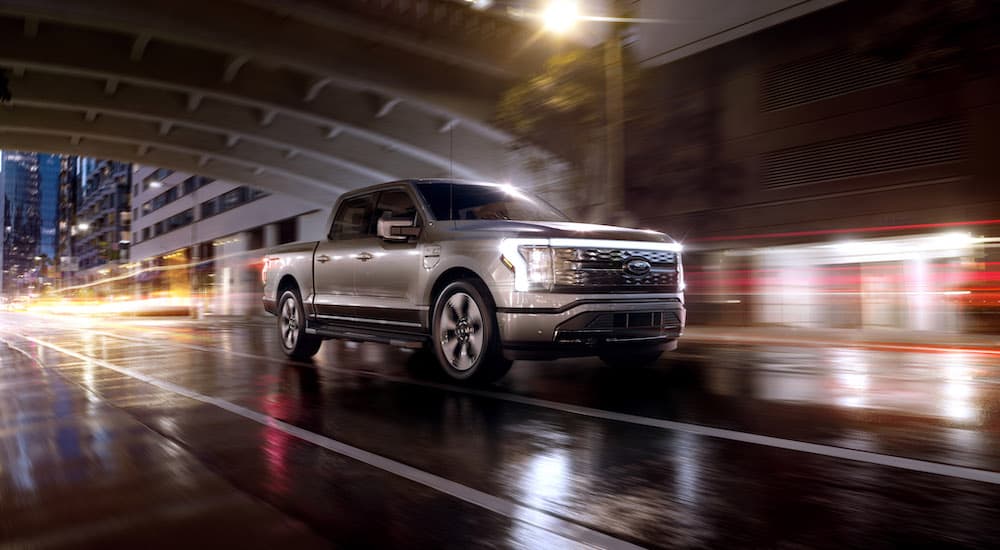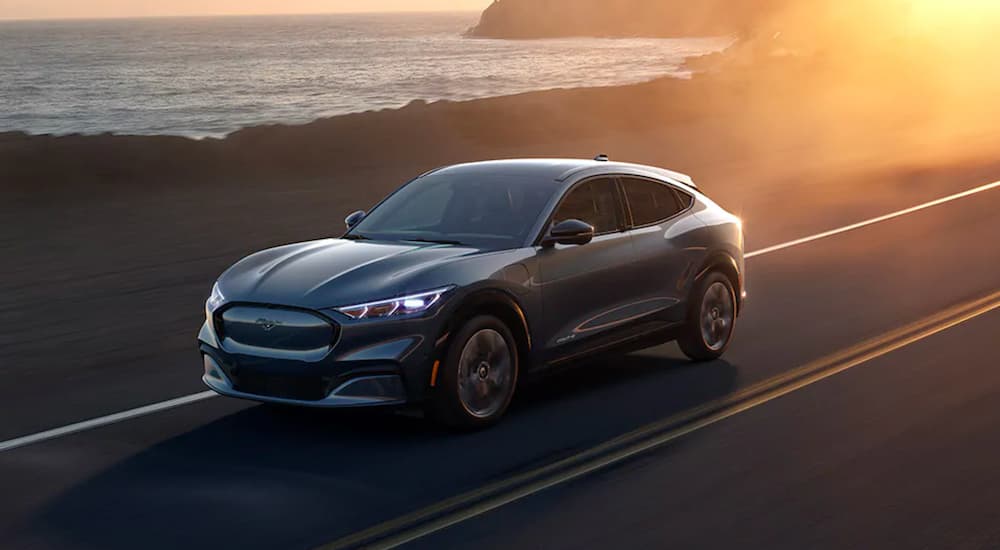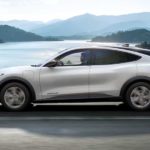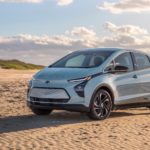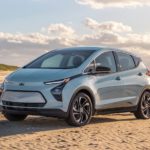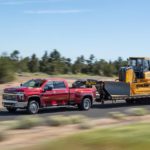Most drivers know that Ford has been around for a while, but what they may not know is how influential this brand has been to the automotive industry as a whole. From the first mass-produced automobiles to the first moving assembly line for cars, the Ford brand has achieved tremendous respect throughout the industry. Perhaps what’s most exciting is the automaker’s ability to evolve with the needs of the nations’ drivers and deliver vehicles that meet their specifications, especially when it comes to efficiency and the preservation of our planet. More automakers are turning toward EVs to lead them down the road to success, and Ford has led the charge, especially with models like its F-150 Lightning truck. The next time you’re passing by your local Ford Lightning dealer, stop and think about how the brand has gone from gas to diesel to EVs, paving the way for an electric future like no other.
Get Going with Gas
Traveling was a hassle years ago, with many people being limited to walking or depending on a horse to get them where they needed to go. Henry Ford changed all that when he debuted his first gas-powered vehicle, the Quadricycle in 1896. It was a buggy that sat on four bicycle wheels paired with the convenience of a gas engine, which pumped out a whopping four horsepower. Although this invention was a far cry from vehicles of today, the industry had to start somewhere, and over the years Ford perfected this design and elevated overall performance on the road. In 1901, his Sweepstakes model, which pumped out 26 horsepower, proved its worth, beating out rivals on the track and solidifying Ford’s spot among the elite.
Of course, the Model T is what Ford is really known for, with its iconic design and simplistic nature. It became one of the best-selling vehicles of all time, and it’s still highly sought-after by collectors worldwide. In 1932, Ford upped the competition with the unveiling of its first flathead V8 engine, which provided more power and excitement to the drive. Gas-powered vehicles quickly took over, with more families being able to bring home an affordable and convenient mode of transportation, revolutionizing how we began to travel.
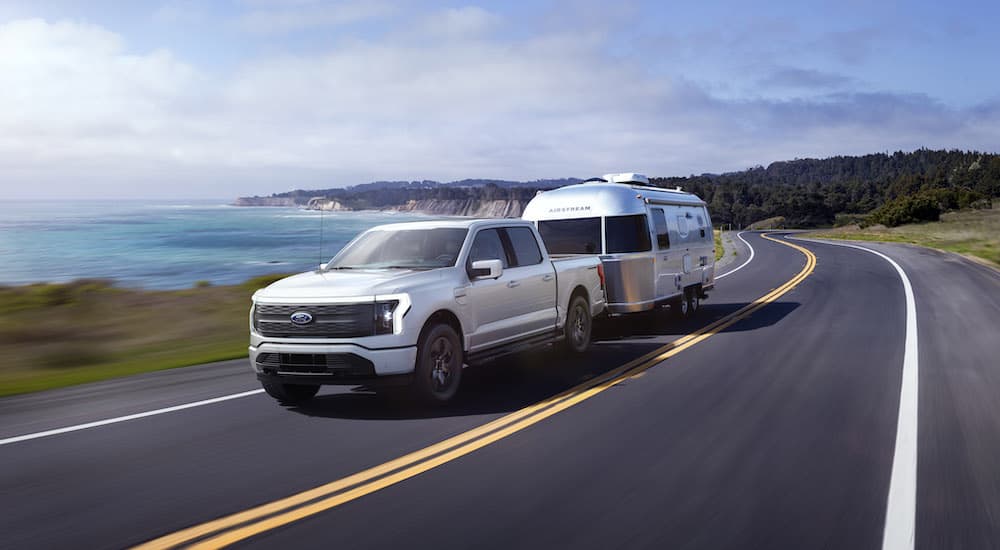
Diesels Take on Daunting Tasks
Many truck enthusiasts are familiar with the famous Ford Power Stroke diesel engine, known for being able to tackle insurmountable tasks like they’re mere child’s play. Although it seems like the brand has been producing these high-performing powertrains since its inception, the automaker didn’t get into diesel engines until the 1980s. After years of traditional gas-powered vehicles being unveiled by the brand, Ford knew that it needed to offer something up to those who required more power in their ride without sacrificing fuel economy in the aftermath of the 1970s fuel crisis. That’s when the 6.9L naturally-aspirated diesel came in to save the day in 1982, offering 170 horsepower and 315 lb-ft of torque to be able to handle more challenging tasks.
Over a decade later, the Power Stroke name made its debut, which was the perfect solution for light-duty pickup trucks. With 210 horses driving it forward and 425 lb-ft of torque to deliver the power, Ford trucks armed with this exceptional engine were able to accomplish more. Ford only continued to perfect its diesel arsenal, with some of today’s models showcasing some of the most impressive power in the industry.
A Rich Electric History
It’s a common misconception that Ford has just gotten into the EV game. In fact, the brand has been engineering electric vehicles for over a century. In the early 1900s, Henry Ford began tinkering with the idea of powering his vehicles with electricity, partnering with his friend, Thomas Edison, to make a low-cost electric vehicle. There were roadblocks along the way, of course, especially when it came to how to charge its battery while keeping it lightweight enough as to not negatively impact its efficiency and performance.
By placing the battery under the seat, Ford was able to build several prototypes to test electric efficiency, with some of his models capable of traveling up to 100 miles on all-electric power. Appealing heavily to women, due to the fact that electric vehicles were easier to start and much cleaner than their gas-powered counterparts, Ford was urged on to perfect its EV offerings. However, the electric revolution that Henry Ford claimed was coming didn’t quite make its way into fruition until much later. In the 1950s and 60s, Ford revisited EVs, due to regulations set forth by various environmental movements regarding the detrimental effects of gas-powered vehicles on the environment. Breakthroughs in battery technology in the 60s allowed Ford to unveil its Comuta minicar. However, electric engineering just didn’t quite take off during this time.
Today’s Current EV Lineup
The late 1990s brought even more strict emission standards to the automotive industry, which prompted many brands to get back to the drawing board regarding their electric and hybrid offerings. With models like the Toyota Prius taking over roadways across the nation, drivers were able to recognize that hybrids and EVs were better for the environment, as well as more efficient, thus keeping more money in their wallet. As the years rolled by, Ford threw its hat into the ring with the Ranger EV pickup, Focus Electric sedan, and other EVs of all shapes and sizes.
Today, the Ford EV arsenal stands tall, with a number of models loaded with EV power. From the strong and durable F-150 Lightning to the stylish Mustang Mach-E, Ford’s electric vehicle selection is as versatile as the brand itself. You’ll find several hybrid variations of Ford favorites, like the Ford Escape and F-150, while brand-new models have made their way into the lineup, like the compact Maverick pickup truck. Ford has even revamped its commercial Transit van line to offer an all-electric E-Transit model, increasing efficiency and sustainability for companies everywhere.
An Electrified Future
Ford plans to lead the shift from gas to electric in the upcoming years, with the unveiling of its most advanced auto complex in history. BlueOval City will consist of a massive facility, spanning six square miles, and will be the hub for all of the brand’s electric offerings for the future. Two battery plants in Kentucky and one in Tennessee will allow Ford to increase its capacity to engineer and build a slew of EVs for the future. Like many automakers in the industry, Ford is on a mission to bring more EVs to drivers across the nation, readily available and packed with power that can only come from Ford. Not only will there be more EVs on dealership lots across the country, Ford will be able to employ even more hard-working Americans in these state-of-the-art facilities.
It’s no secret that Ford has come a long way from the Quadricycle. Throughout the past 120 years, Ford has been at the helm of some of the most remarkable innovations the industry has seen. Whether it’s dabbling in diesel power or electric efficiency, the Ford name excels, providing drivers everywhere with immensely impressive options to help them travel with maximum assurance. Whether you pass by an F-150 Lightning on your way to work or a tough-as-nails diesel model, it’s evident that Ford designs vehicles for the people. Bringing electric capabilities to the masses for affordable prices is what the brand is striving to do, and with its groundbreaking facility opening its doors as early as 2025, the future of the blue oval is unquestionably bright.
